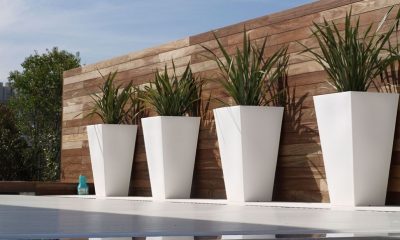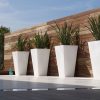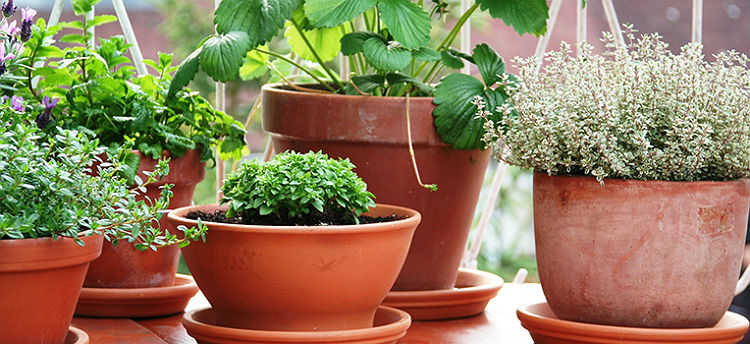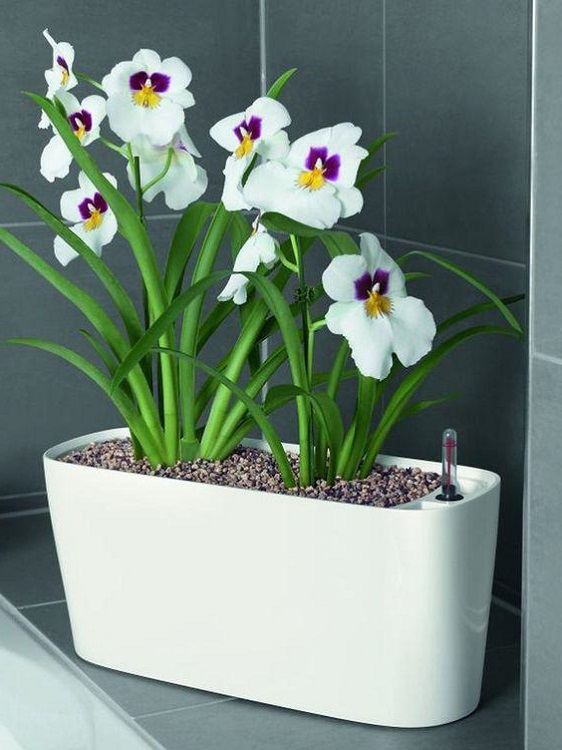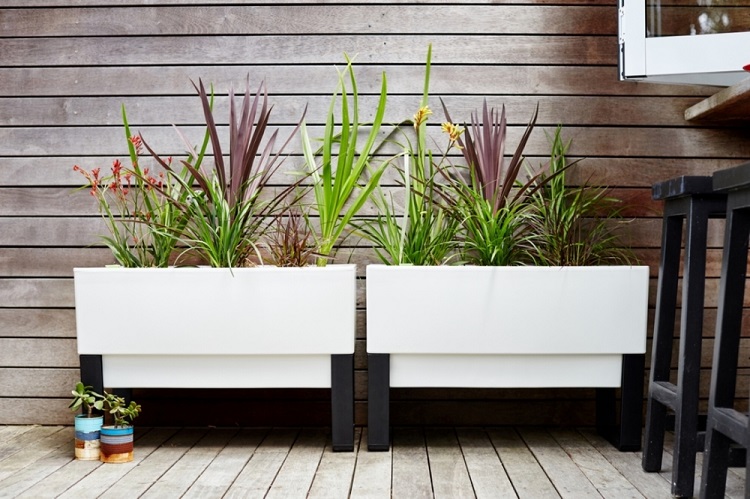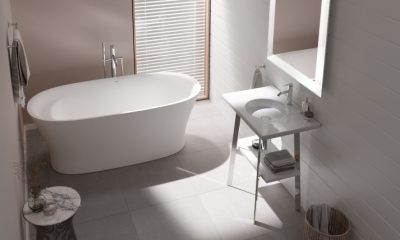Home & Garden
The Best Planters & Pots Types for Your Home Oasis
Plants can completely transform the appearance of your garden, apartment, or balcony. But, it’s not only the flowers that can be attractive; different planters and pots can also serve as decorative components. Planters are little gardens that can be placed anywhere you need – patios, balconies, and even front porches. Moreover, you can use wall planters to create a vertical garden if you lack space.
If you’re looking for one-of-a-kind, long-lasting planters, you should know a few things about their materials. Some plants thrive best in wooden planters, while others thrive in ceramic and terra cotta pots. Before purchasing and enhancing your planter collection, check out the following types.
Wooden Planters
If you’d like a custom-size, affordable and convenient option, wooden pots and planters are the best you can get. These pieces will look beautiful and last for many years when they’re made of the right type of wood, carefully constructed, and well maintained. Moreover, styles range from ultra-modern to ultra-traditional, with matching sizes.
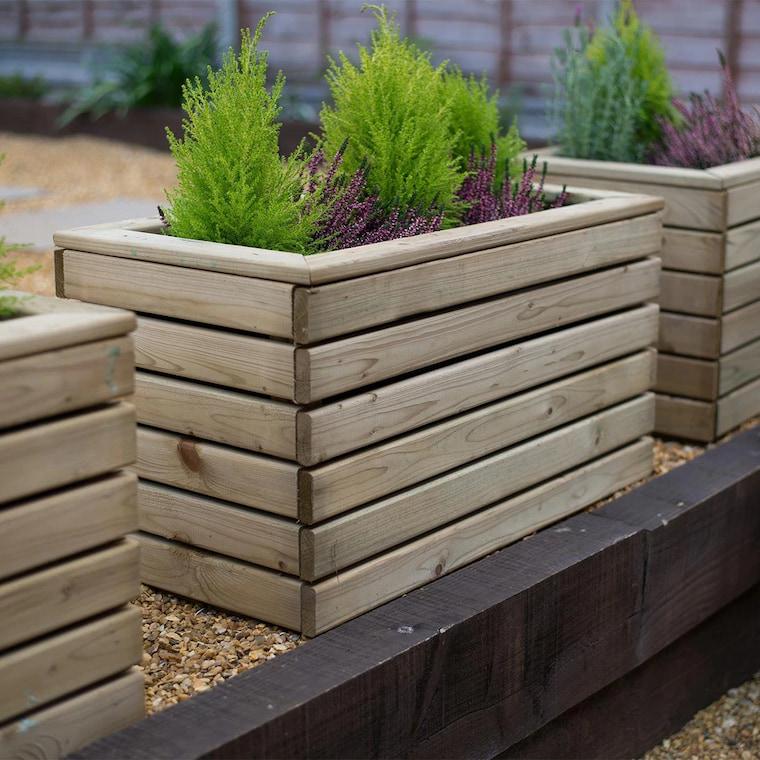
Cedar is a durable but pricey wood widely used in plant pots. Teak will likewise persist in outdoor situations, and redwood offers similar qualities but is slightly more expensive. Pine is cheap, but it doesn’t survive as long as other woods unless it’s been pressure-treated with preservation chemicals. Stainless steel or another corrosion-resistant metal should be used to manufacture wooden planters’ screws, nails, and other fasteners.
A wooden planter that is improperly maintained can rot in a year or two. So, when storing your pot for the winter, don’t forget to remove the soil to avoid decomposition. To prolong the lifespan of your wooden pots and planters, line them with solid plastic. Use heavy-duty plastic bags with drainage holes cut on the bottom, fill them with planting soil and plant the specimens. Remove the plastic bag’s top and tuck the edges under the soil.
Terracotta or Ceramic Pots
Terracotta pots are traditional planters, with a neutral and warm tint that complements nearly any plant. Terracotta pots come at various qualities and prices, ranging from dirt cheap to outrageously costly. Modern planters can also be made of traditional ceramic. Ceramic pots are often formed of denser, less porous earthy elements and are always glazed on the interior and outside. High-end and glazed ceramic pots are extremely long-lasting.
However, terracotta and ceramic pots can be extremely heavy, especially when filled with soil. To make them lighter, fill the bottoms of large pots with empty, sealed plastic bottles before adding the ground. Be careful when moving around the terracotta and ceramic planters, as they can brittle easily.
Metal Planters
Although an unusual planter choice, metal pots serve as an accent piece that gives your garden a fabulous look. Metal planters come in various shapes and sizes. Even a repurposed filing cabinet can be used as a planting pot. Painted, brushed, or shiny metal surfaces will all serve the purpose.
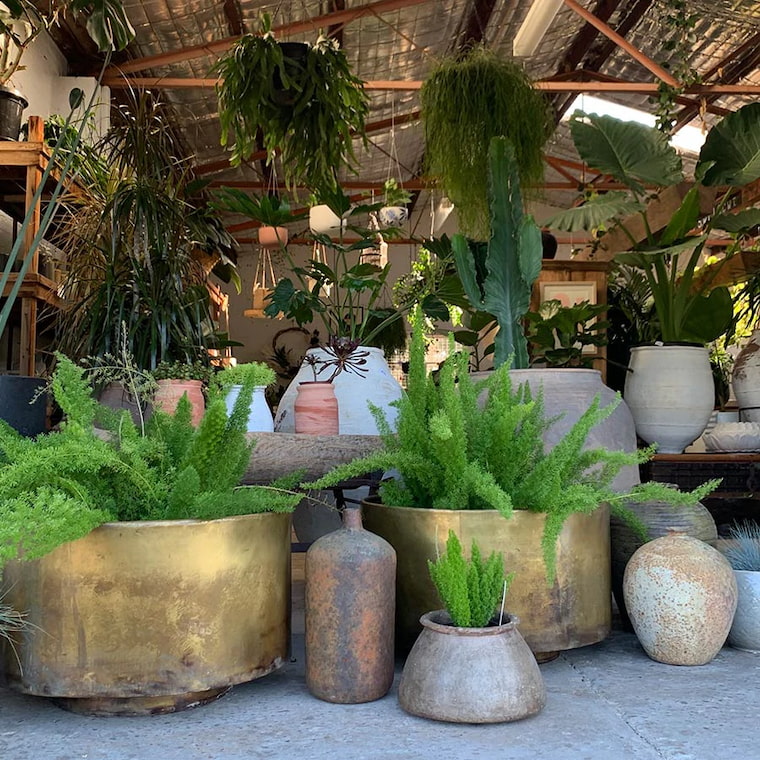
On the other hand, metal can become extremely hot in the sun, burning your plants and quickly drying out the soil. There are a few options for dealing with this issue. Metal containers should only be used in shaded areas since they minimize heat and eliminate glare, which can harm plants. Alternatively, use bubble wrap to insulate the soil and roots from the hot metal. However, the metal may become hot enough to melt the bubble wrap in really hot regions. As a result, consider plants that thrive in hot climates, such as desert succulents and other plants that prefer dry, hot soil.
Plastic Pots
Plastic planting pots are always practical, whether you purchase a high-end beautiful foam plastic pot from a top garden retailer or repurpose a five-gallon pail that formerly carried birdseed. Plastic pots are lightweight and come in a variety of shapes and styles. They can be modern or traditional, and they can even imitate stone, concrete, or terracotta. They can have patterns, be any colour, and have finishes ranging from matte to high-gloss. Although plastic planters are highly resistant to damage and cracking, some cheap variants can fade and become brittle in the sun and break as they age.
Fibreglass Plant Pots
Because of their incredible versatility, fibreglass planters are very often mistaken for concrete, terra cotta, or even wood at first appearance. Fibreglass pots are beautiful and ideal for designer gardens. Besides being far lighter than ceramic, fibreglass is extremely long-lasting and can survive practically everything.
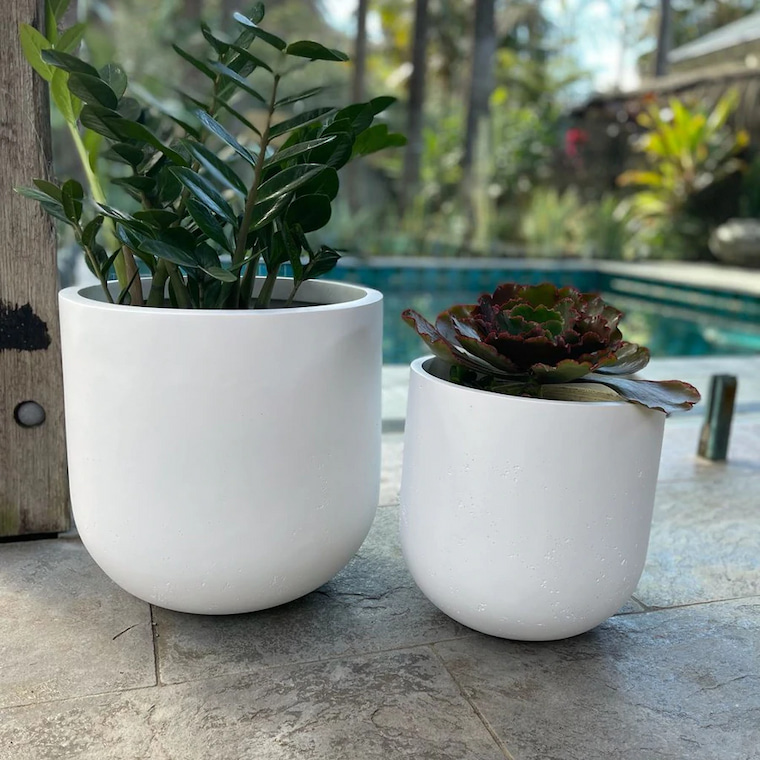
While fibreglass planters can survive the winter outdoors, they will last longer if properly maintained. At the end of each gardening season, clean, hand-wash, and store your fibreglass pots. Before filling large fibreglass planters with soil, place them in their ultimate location. Fill the bottom of the pot with empty sealed plastic bottles to lessen the weight if it will be moved around.
Concrete and Hypertufa Planters
Concrete is used to create some of the most stunning planters. Colours and shapes can be subtle and lovely. The main disadvantage is that they can be extremely hefty. Unlike concrete, hypertufa is lightweight. Both materials are extremely durable, and the planters can be left outside in even the worst conditions. But, even the hardest pots can be cracked by frequent thawing and freezing of water inside, so it’s better to cover them for the winter.
Fabric Pots
It may seem paradoxical to plant in fabric pots, but they are more and more common on the market because plants love them a lot! When it comes to planting in fabric pots, the Smart Pot is an excellent option since it’s a breathable fabric pot that “air prunes” plants so they don’t become rootbound.
Fabric planters are lightweight and highly resilient, and you can hose them down, fold them up, and store them at the end of the season. They’re also available in a variety of sizes. You may dress them up by putting them in bright, low-cost laundry baskets. You can also grow your plants in reusable supermarket bags. Bags constructed of plastic and textile fibres are better options like those made solely of fabric often don’t endure the growing season.


